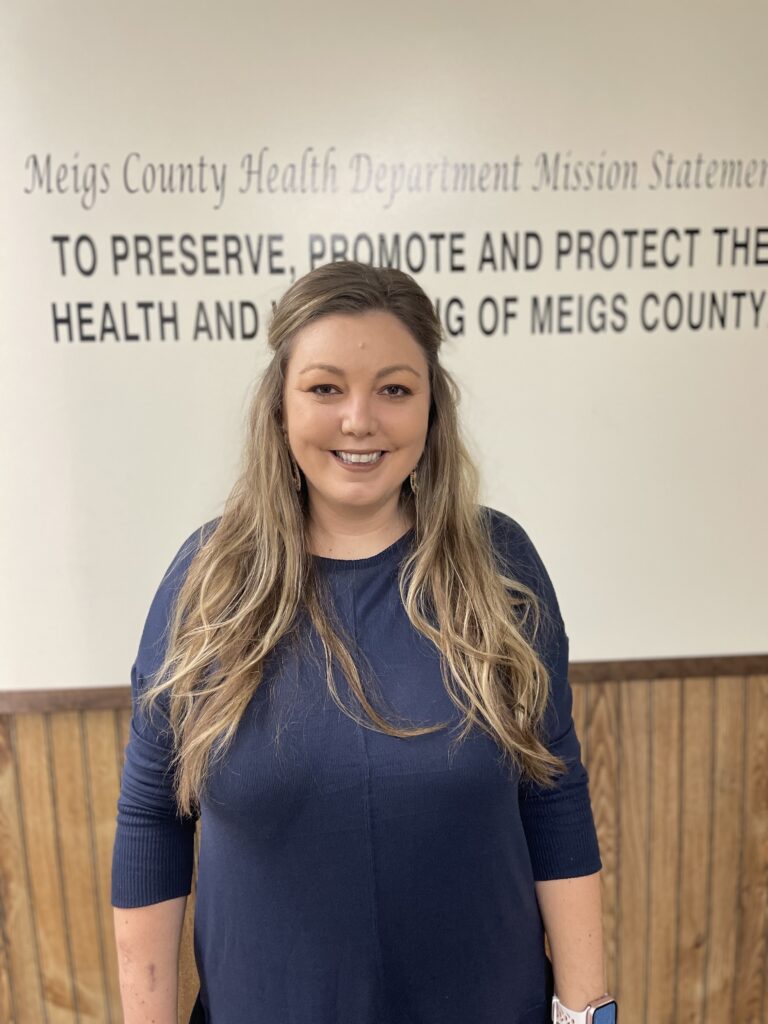Meigs Health Today: Children’s Dental Health


Meigs Health Today: Children’s Dental Health
By Jennifer Richmond, HR Coordinator, MCHD
February is National Children’s Dental Health Month. This month-long national health observance provides the opportunity to promote good dental care for children and offer education resources on how to maintain good oral health. Cavities, also known as tooth decay, are the most common chronic diseases of childhood, but yet, they are preventable. Children who have poor oral health often miss more school and receive lower grades than children who don’t.

Untreated cavities can cause pain, infection, and can lead to problems eating, speaking, playing, and learning. More than 1 in 5 children aged 2 to 5 years have at least one cavity in their baby teeth, indicated per the Center of Disease Control (CDC). To prevent, protect, and maintain your child’s teeth, please follow the below steps.
Good dental health starts in the womb. It is vital for pregnant women to practice good dental hygiene. During pregnancy, women are more prone to gum disease and cavities, which can affect the baby’s health. Pregnant women should see a dentist before delivery, brush at least twice a day, and floss daily. A tip for keeping your teeth safe if you have nausea during pregnancy is to rinse your mouth with 1 teaspoon of baking soda in a glass of water after you get sick. This will help remove stomach acid from your teeth and keep the enamel safe.
After baby is born, it is crucial to start a good dental routine. Wipe gums after each feeding with a clean cloth. This will aid in wiping away bacteria and sugars that can cause cavities. Try to avoid putting baby to bed with a bottle. This can lead to tooth decay also known as “baby bottle tooth decay” which occurs when a baby’s teeth have prolonged exposure to sugar from drinks. This tooth decay most often occurs in the upper front teeth, but other teeth may also be affected. Babies put to bed with a bottle or when a bottle is used a pacifier have a tendency for developing baby bottle tooth decay, per the American Dental Association (ADA).
It is also important to note that the next time your child’s pacifier goes flying, don’t pick it up and put it in your mouth to clean it. The ADA states that cavity-causing bacteria can be passed through saliva, so you could potentially be introducing germs to your child instead of protecting him or her from them. The same goes for mealtime. Keep utensils and your germs separate for a healthy mouth and body.
Children should have a dental visit by the first birthday to spot signs of problems early. Children 2 and older should brush teeth at least twice a day with fluoride toothpaste. If your child is younger than 6, it is recommended that you watch them brush. Per the CDC, they should use a pea-size amount of toothpaste and always spit it out. Help your child brush until they have good brushing skills. Children should start flossing when teeth begin to touch. It doesn’t matter if flossing occurs before or after brushing, as long as it is done. You can use child-friendly plastic flossing tools to easily clean between your child’s teeth until the child learns to do it.
A child’s diet is essential for developing and maintaining strong and healthy teeth. Incorporating good sources of calcium to a child’s diet will help build strong teeth. Yogurt, broccoli, and milk are good sources of calcium. Having healthy eating habits will also help with good dental care. Eating fruits and vegetables for snacks instead of candies and cookies and drinking water rather than juice or soda will eliminate excess sugar intake. Bacteria in the mouth produces acid when a person eats sugary foods. This acid eats away minerals from the tooth’s surface, making the tooth weaker and increasing the chance of developing cavities per the CDC.
Dental sealants are a quick, easy, and painless way to prevent most cavities children get in the permanent back teeth. According to the American Dental Association, Children aged 6 to 11 years without sealants have almost 3 times more first-molar cavities than children with sealants. The sealant forms an extra barrier between the cavity-causing bacteria and your child’s teeth. Sealants have been shown to reduce the risk of decay by nearly 80% in molars, per the ADA.
In conclusion, please remember to follow the above steps to help your child maintain good oral care. Schedule regular dentist appointments for cleanings and check-ups, set a timer for 2 minutes for brushing and praise your child for doing a good job. Our mission at the Meigs County Health Department is to preserve, promote, and protect the health and well-being of Meigs County. Instilling good oral care in children will align with this mission. The Meigs County Health Department can also provide information on developing and maintaining healthy eating habits for children and adults, which ultimately promotes good oral care. Please contact MCHD for more information at 740-992-6626 or visit us at www.meigs-health.com.









